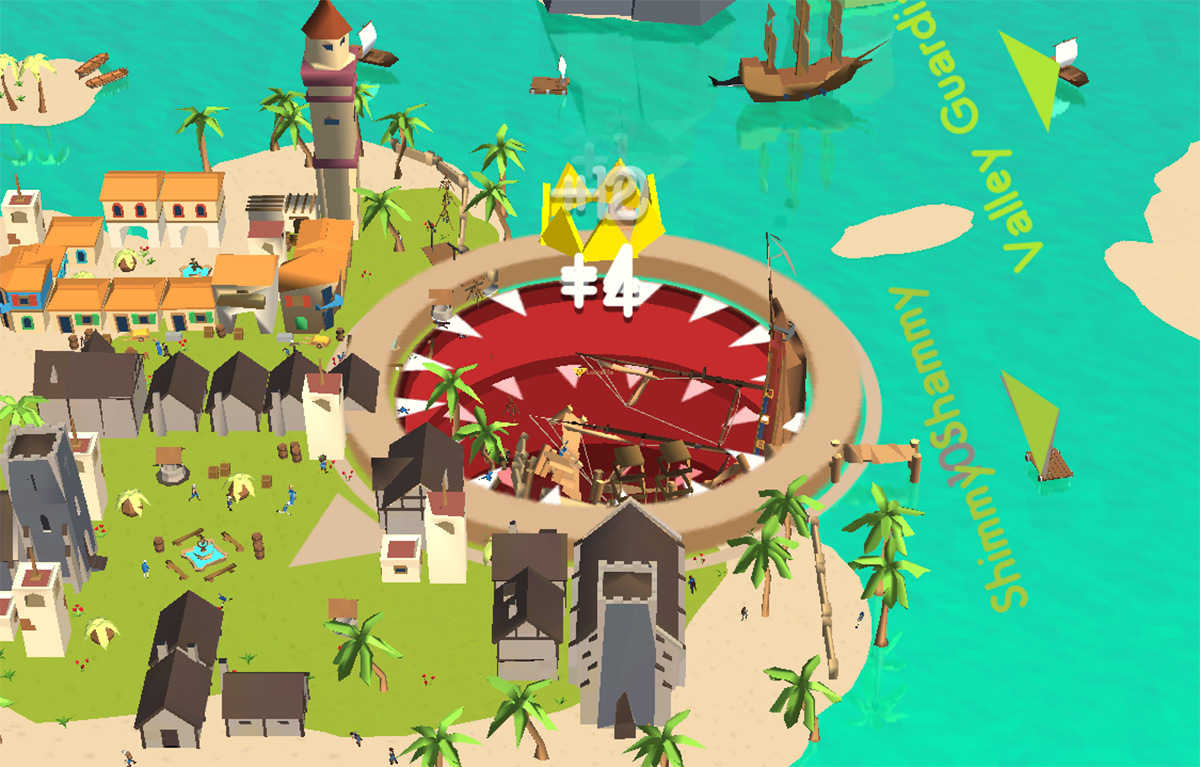
I’ve been hooked on a game called hole.io lately. It’s not the kind of fun that it sounds like, but it is addictive. You play a hole in the ground swallowing plants and people and cars. As you eat, you grow bigger, so you can swallow bigger things, like giant robots, ships, buildings, and the space shuttle. There are a few automated opponents; you can swallow anyone smaller than you for extra points.
This game couldn’t take my money fast enough. I paid for the no-ads version in the first hour of my inaugural eight-hour session, because half my life is now spent curled in a ball on my couch pulling on my hair and playing games on my phone. Eating the world feels right. The game provides three modes to do it.
In Solo Run, it’s just you and your hole trying to eat as much as possible by yourself. I think my top score is about 82 percent. The beauty of this level is you can’t do it in the two-minute time limit. There’s always something to strive for, and the volcano is inedible, thus a constant frustration. This mode is how people see things from their individual brains: a struggle to grow and achieve a little more, completion forever out of reach.
Battle mode is where you eat everyone else, be the last Katniss standing, wipe the weak off the board in an orgy of consumption. The first time I played this mode, I discovered a problem: I let one other opponent live, because in battle mode, there’s no time limit, so I thought I might get to actually eat everything before finishing off the competition. But hole size is capped, so once both of us hit level 19 we couldn’t eat each other, and the game could never end. I couldn’t even eat everything else: in battle mode, the edibles keep reappearing just off screen. It became two holes too big to die, circling each other and swallowing an infinite supply of sustenance to no point. This mode is how people think the world works, whether they’re the hole or the whale falling into it, and in fairness, the world tends to operate as if this were true.
Classic mode is the closest thing to reality. Holes eat each other and everything around them, respawning to compete again, and in a brief space of time, it’s over, leaving a gutted landscape and a bunch of spinning holes.
In all modes, first desperately search for anything that fits in the hole, but once the hole’s size increases, don’t go straight for the biggest thing that will drop. Instead, look for large groups of smaller things, that the hole can easily guzzle without getting anything stuck, because that will force the hole to slow down. Momentum is key, so always go after things that fall in easily and won’t choke your hole.
Placement is key. Your death hole needs to start near things small enough for it to eat, so it can grow quickly. Even when you’re lucky enough to start with something easily digestible, you have to chow down and head in a random direction and hope it’s taking you to a parking lot or a shanty town with enough third- and fourth-level digestibles to get you to suburb-eating level. This initial placement is random, and sometimes it’s too far from anything that’s easy to swallow, so you search and search, and maybe get a few levels up, but you know you’re doomed from the start, so you just push through until it’s over because we’re all in lockdown waiting to die and it’s not like there’s anything more meaningful to do.
Anyway, this game is all I can think about when somebody says we need to save the economy.





